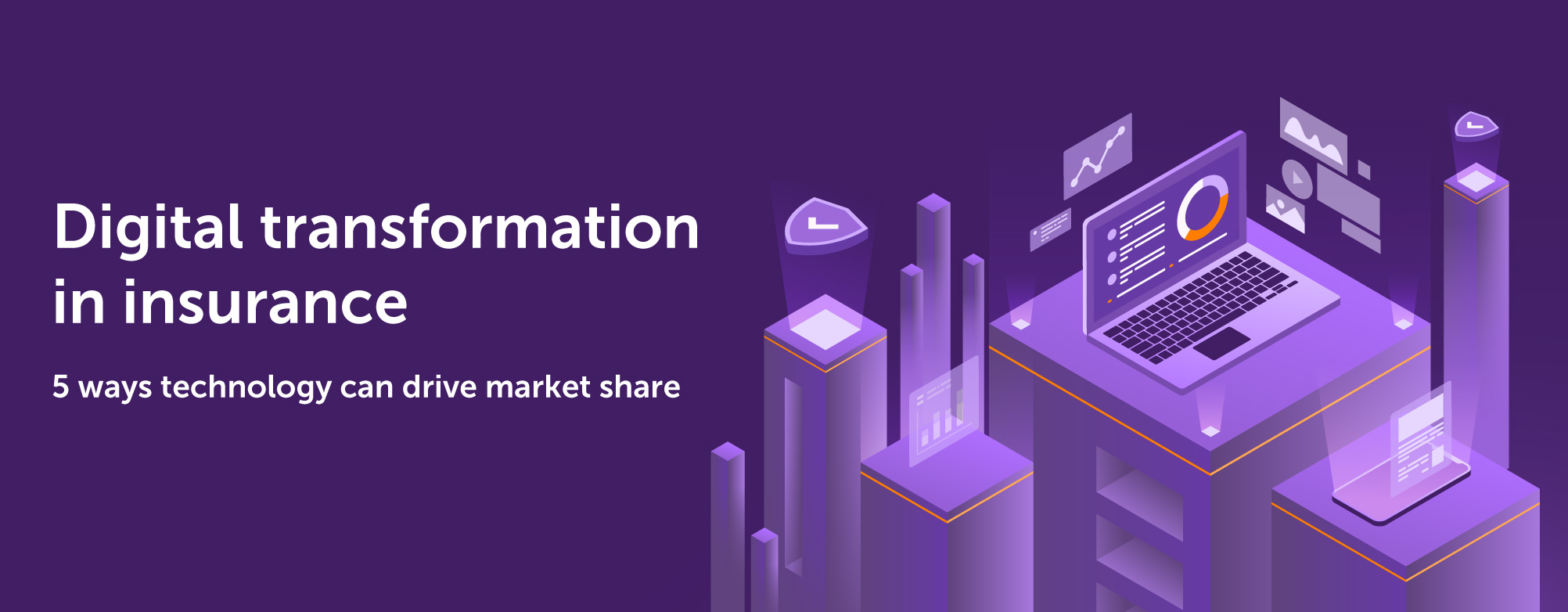Digitalisation is a well-worn buzzword in the insurance industry. Yet a significant number of insurance companies and MGAs are still transacting a large amount of business manually, or with outdated legacy systems. Changing established systems and processes can be a daunting task, plus, digital transformation is often seen as another cost, which can put many business owners off taking the plunge.
But, as innovation continues to accelerate, we’re at a tipping point where digitalisation will become the only way to build a successful, profitable insurance business. Customers today expect a convenient digital experience, both for personal and business lines, and this will only increase as digital-native Millennials and Gen Z come to dominate purchasing decisions. Companies that fail to meet their needs will fall further and further behind.
Insurance businesses need to shift their mindset from thinking about insurance software as a cost, to considering digitalisation in insurance as an investment, that will help to put them ahead of the competition. Here are five ways it will help them to win market share.
1. Develop new market opportunities
The risk landscape is evolving all the time and the only way to stay relevant is to evolve with it, by identifying new customer segments and risks. A digital system gives insurance companies access to data on market trends and customer behaviours to spot untapped opportunities and develop products more quickly and efficiently. This provides an important differentiator to attract and convert customers and win market share.
The cost and efficiency savings that come with digitalisation can also allow companies to write a wider variety of business than would otherwise be viable. Insly client, Accelerate Underwriting, has built a fully digitalised system with the objective of writing a higher volume of lower value policies, where it has now found its niche.
“Our system is one of the very few that can cater for smaller schemes and allow us to cost-effectively write sub £1m schemes,” says Scott Brown, Founder of Accelerate Underwriting. “The trick is having a system that allows you to do that cost-effectively.”
2. More targeted marketing
Implementing digital systems also enables more targeted and personalised marketing strategies, to capture the right customers with the right product messages. Insurance digital transformation unlocks data to build a clear picture of target audiences, allowing companies to carry out highly targeted advertising and marketing through social media, search engines, and online content to drive organic traffic to landing pages, websites, and portals. Even if you choose not to sell online, these tactics can be hugely valuable in moving customers down the marketing and sales funnel and helping to educate them about the benefits of your products over competitors.
3. Streamline broker partnerships
If you sell through brokers, digitalisation in insurance can make these relationships even more productive and profitable by reducing administration and driving efficiency. With insurance software, MGAs and insurers can create specialised broker portals, where brokers can retrieve quotes, documents, sell and amend policies– ultimately helping them to sell more insurance cover. Digital transformation can also incorporate policy administration systems (PAS), where they can track and optimise broker relationships, including controlling broker access, commission rates, and payment processing.
4. Enhanced customer experience
Customer experience is now critical to driving insurance sales and growth. Through digital channels and AI-powered chatbots, insurance companies can offer 24/7 support, real-time policy quotes, and personalised recommendations based on customer data, as well as automating and streamlining the claims process, through robotic process automation. Digitalisation also brings the possibility of new distribution channels, such as embedded insurance, or selling via ecosystems, to reach a wider pool of potential customers. By making things as easy and convenient as possible for customers, this in turn drives positive reviews and recommendations, and the cycle continues.
5. Maximising customer retention and spend
In addition to winning new customers, digitalization in insurance can also maximise the spend of current customers, by flagging opportunities for cross-selling and upselling products and services. With a digital system, structured data, and fully digitalised finance and accounting systems, customer service representatives can easily see where clients have gaps in their coverage, or where a new policy might suit their needs. Meanwhile, online portals make it easy for customers to add supplementary policies and benefit from online and multi-policy discounts, with speaking to an adviser.
Digitalisation is no longer a ‘nice to have’ for insurance companies, it is essential to competing effectively in the modern insurance landscape. Nor does digitising systems have to be a huge upheaval. With no/low-code solutions such as Insly, insurance companies can take a modular approach to update their operations without the need for lengthy development time – so disruption is kept to a minimum.
If you’re taking the first steps in your digital journey, then Insly’s no/low-code modular insurance software can help you to digitalise the whole insurance lifecycle, from distribution and underwriting, right through to claims. If you would like to find out more, contact us to book a demo now.



